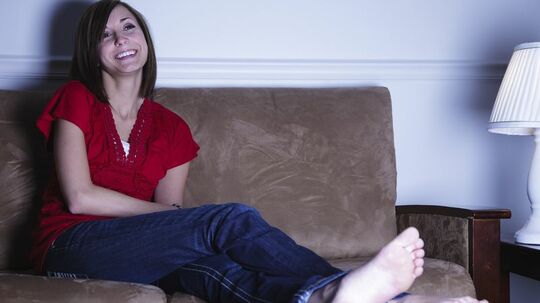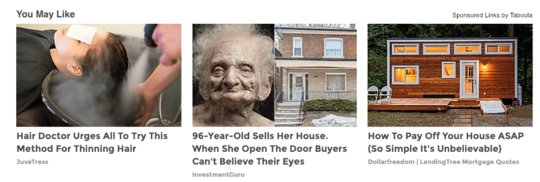4 Reasons Online Ads Can Be Risky For Brand Marketers
When marketers talk about the problems plaguing online ads, they tend to focus on performance-impacting issues, such as viewability, click fraud, and the expensive ad tech tax. You may also hear about brand safety, but usually in reaction to high-profile mishaps like with Youtube and Breitbart.
This is because digital advertising falls under the realm of the performance marketer, who is paid to ensure CPCs stay below this and CTRs stay about that. They are incentivized to view success in the short term. And the folks who are paid to build brand equity (say, the CMO) generally let this team have full reign over spend, as long as it's within a specific ROI.
There's nothing wrong with this, but it does carry a major risk: what may drive clicks in the short-term could tarnish a brand's reputation long-term. This doesn't mean it will, but it's important for buyers to be aware of where they buy and the issues that can accompany online advertising from a branding perspective.
Below lists five of those risks, with advice on how to avoid those pitfalls.
1. You can get lumped in with spammy advertisers
Spammy ads have existed since the beginning of online ads. In fact, what's credited as the very first ad (from AT&T on HotWired.com in 1994) involves rainbow text and a clickbait headline.
These ads, however, have multiplied thanks to recommendation widget networks like Outbrain and Taboola, who legitimized them via placements on major publications (Outbrain claims they work with 80% of the world's premium publishers).
We've all seen these ads: the "You May Like" sections that promote cure-all supplements, celebrity gossip slideshows, and, sometimes, legitimate brands. And we all know what happens when you click them: you're taken to either (1) a page that's so ridden with ads you quickly exit (sadly, you'll never learn which Bieber girlfriend was the richest), or (2) a seemingly-impartial "article" that blatantly promotes the product.
Appearing in this section, then, lumps you in with these spammy advertisers (there's no escaping it, since the advertiser's name is on each ad). For instance, in the above example, the $4B public company LendingTree appears alongside two dubious ads. Not only that, but they employ a clickbait headline that feels off-brand, especially considering their own CMO stated LendingTree's purpose is "to help simplify financial decisions...through choice, education, and support."
This ad likely drives clicks and leads for LendingTree, but they run the risk of looking spammy and manipulative, a trait that belies their "education and support" mantra.
The easiest way to sidestep this risk is to stay away from recommendation widgets. Even whitelisting to the highest premium sites won't do much. You could also build a dummy brand whose only purpose is to direct users to your main site, helping to hide your brand name in the ad itself. At the very least, try to not use off-brand clickbait headlines and deceptive images.
2. Your brand can get associated with terrible, frustrating ad experiences
It's no secret that people hate bad ads. Like, a lot. In fact, 91% of people say ads are more intrusive than even just 2-3 years ago. This doesn't mean they think ads should go away: 83% agreed that 'not all ads are bad, but I want to filter out the really obnoxious ones', indicating that the issue isn't ads per se, but bad ad experiences.
Nor are consumers forgiving. 48% of people say they abandon an app or site if it crashes, and 25% said they'll then seek out a competitor. And a Microsoft-led research study found that when a site showed spammy ads to a cohort of visitors, that group was 20% less likely to return to the website versus a control group (non-intrusive ads led to only a 5% drop).
These studies highlight how much bad ads frustrate users, though they do focus on the impact on the publisher. While harder to measure, it makes sense that this agitation could bleed over onto the advertiser as well.
Indeed, given that 99% of marketers care about brand safety (with 'brand safety' defined as a strategy ensuring ads don't appear somewhere that conflicts with the brand's image), why does this concern focus on contextual placement? If brand safety is about avoiding off-brand association, marketers should also avoid being associated with bad ad experiences, which could tarnish brand loyalty long-term.
Below offers examples of ad units and experiences to be wary of, but there are certainly more than just these.
Too many ads: While most sites squeeze extra ad units wherever they can, others prefer to live by the principle of, "Why place one ad when you can place thirteen?" Sometimes there are so many ads that it's difficult to identify what is and what isn't organic content. And while this is more prevalent on low-quality websites, even established brands, like Kmart, do it.
Pop-ups (or pop-unders): Not surprisingly, 73% of consumers detest pop-ups. And yet, well-known brands work with pop-up/pop-under ad networks. Not only are they intrusive (who wants to exit their browser to discover an ad was lurking behind), they are often used by actual scams, like ads for nefarious "anti-virus" software.
Autoplay video ads: Most video networks err on autoplay, even though 82% of people will exit a web page if they hear an autoplay ad! Being associated with this annoyance is not ideal for any advertiser.
Slow page loads: Users are not dumb. If content appears quickly but the page is still loading and jumping around, they know it's due to ads. It's prevalent and frustrating when it happens, and the last thing you want is for this agitated person to realize it's your ad that's the culprit.
How do you prevent your brand from being associated with bad ad experiences? It's difficult, but possible, and involves being aware of whom you work with, what ad units they use, and what sites they appear on. One strategy is to focus on direct deals with curated publishers, programmatic direct campaigns, and spending on self-serve ad platforms like Facebook, Quora, and Pinterest.
Since programmatic ads/OpenRTB will likely be a traffic source too, it's important to request site lists, blacklist/whitelist, and do research about what ad formats each partner uses.
3. Retargeting ads can make you look creepy
At a time when people are convinced Amazon and Facebook are listening to us via Alexa or our smartphones (they are not), retargeting ads can be both effective for advertisers and creepy to the end user.
These ads - where advertisers target people who have visited their site/app - generally see much better performance than standard ads, such as 10x. But when a user opens their Facebook app and sees your ad; then plays Candy Crush and sees your ad; then, in a frantic attempt to get away from you, puts down their phone and visits CNN on their computer, only to be greeted by three of your ads -- well, it can be a little jarring.
Retargeting shouldn't be shunned - it's a smart marketing tactic - but employing frequency capping where applicable can limit how often your ad gets displayed in a given timeframe, minimizing over-exposure. While there's no magic number, it could be worth testing increasingly stricter rules to understand the impact on clicks and conversions. It could be that stark FC rules don't hurt performance if clicks happen within the first couple retargeted impressions, with subsequent ones succeeding only in creeping out the user.
4. Poorly-labeled sponsored content can appear deceitful
I'm going to break "sponsored content" into two types: (1) sponsored listings, like on Amazon and Yelp, where vendors/sellers pay to promote their products, and (2) sponsored articles, like on Politico and The Onion, where a brand pays for a self-promoting article.
In both scenarios, the ads, served through a native ad server, are often indistinguishable from organic content beyond them being marked as "sponsored", "branded content", etc. Even then, though, 12% of sponsored content violates the FTC guidelines and doesn't have any label.
Since most sponsored content also keeps the user on the same site (such as Amazon ads linking to actual Amazon products, and Politico sponsored articles going to a Politico link), it's easy to click through without realizing it's a paid placement. It may take until the end of the article to realize it wasn't an impartial piece.
This discovery comes at a cost: 43% of US users say they feel disappointed or deceived if they later find out content was sponsored (comically, that same study is a sponsored article on The Holmes Report). As with others, the research doesn't break down whether this sentiment is aimed at the publisher or advertiser or both, but either way, the advertiser is involved in the equation.
Avoiding this risk isn't difficult. One, work only with partners that clearly label ads (from a legal perspective, this is also important). Two, if you are doing sponsored articles, create engaging content that provides value to the user so they won't care if it is promoted. For instance, H&R Block did a wonderful job partnering with The Onion for a branded piece that looked and read like any other satirical article.
---
Do these risks mean marketers should stop their online advertising? Of course not. But it is important for a company's marketing team to bridge the gap between the performance advertiser and the brand marketer, as a digital campaign focused purely on clicks and sales could lead to a decline in long-term brand equity. Indeed, if a user keeps associating you with spammy advertisers, bad ad experiences, creepy retargeting, and deceitful labeling, they may think twice about becoming or staying a brand loyalist.
As with contextual brand safety concerns, the main solution is to be cognizant of where your ads are appearing - and what ad partners you work with - and doing the best you can to minimize these risks and stay on-brand.
This contributed article was written by Chris Shuptrine, VP of Marketing at Kevel, a software platform that makes it easy for brands to build their own ad servers.





